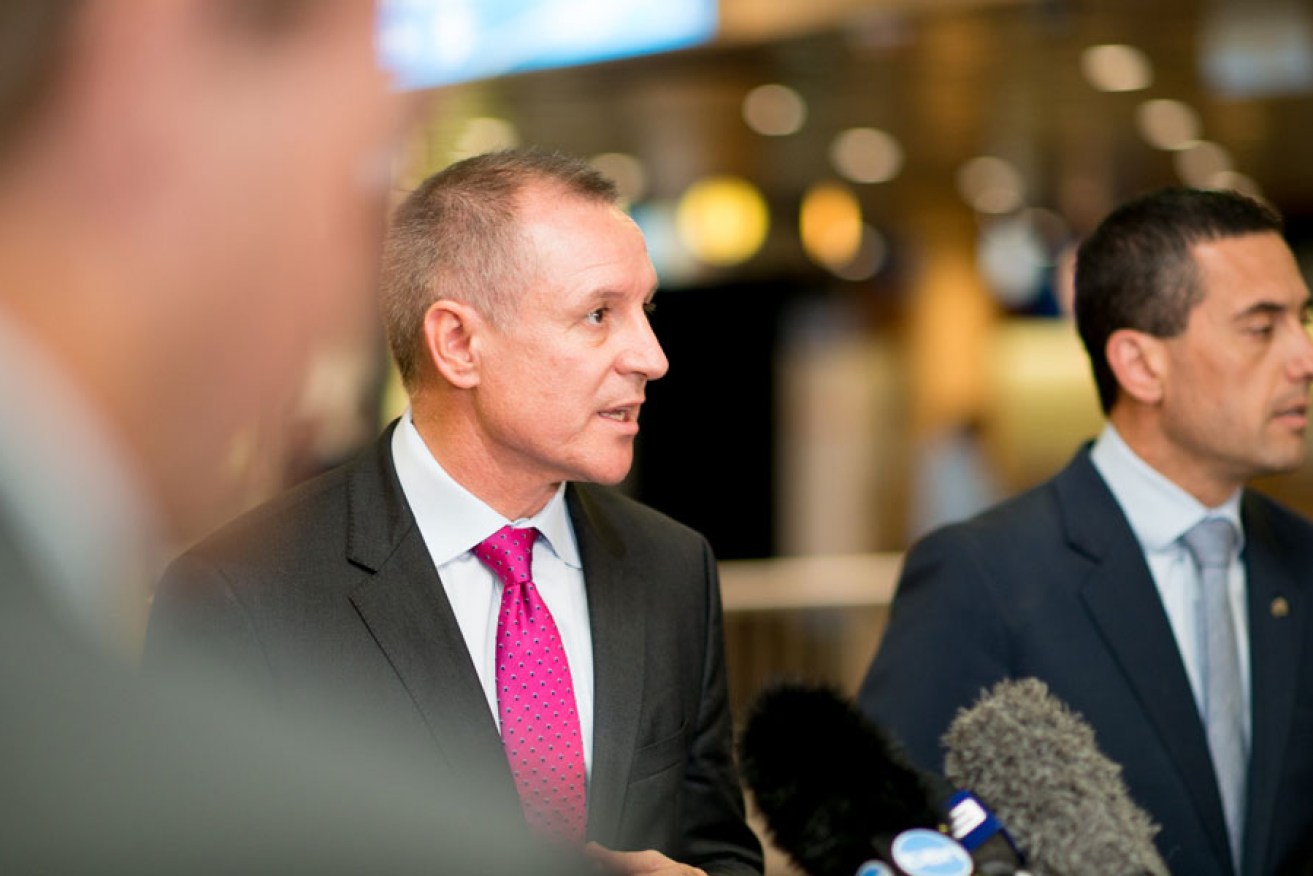Dark clouds for Weatherill’s economic ambitions


Jay Weatherill and his Treasurer Tom Koutsantonis will have to hold their nerve.
Premier Jay Weatherill approaches the summer break on a political high, but with a growing number of challenges to his economic agenda for the coming year.
This morning the Fisher by-election poll was officially declared, handing Labor a majority in its own right on the floor of Parliament.
Weatherill gains a tough and popular new backbencher in Nat Cook, and his authority in the state party – already high after his unlikely victory in March – cranks up a notch.
There is now no concrete or potential impediment to Labor pushing through its legislative agenda in the House of Assembly, given that it no longer needs the support of independent Cabinet members Geoff Brock and Martin Hamilton-Smith.
Weatherill, however, will face other, less controllable, challenges to his desire to devote the coming year to addressing Labor’s frayed credentials with the business community.
Some idea of the scope of these challenges will be made clear in the coming days by Treasurer Tom Koutsantonis in his mid-year Budget update.
His federal counterpart Joe Hockey’s mid-year update, released this week, shows a deterioration of the federal Budget position in the face of falling commodity prices and a contraction in government tax revenue.
For South Australia, this highlights again that we can’t rely on Canberra for economic stimulus.
This morning Weatherill was cagy about his Treasurer’s Budget update, refusing to discuss the date (it is expected before Christmas) and, tellingly, refusing to say whether there would be new cuts to state programs.
“I’m not going to reveal anything about the approach we’re taking there, except to say that our focus is always going to be on jobs,” he told FIVEaa.
“Our bias is to avoid, where possible, cuts, but this is the approach we tried to take in our last state Budget and we’ll try and take it again here.”
He said the federal Budget review had pained a “gloomy picture” of federal finances, but he was “grateful that Joe Hockey decided not to cut further to try and chase that revenue loss downwards because we think that’d be just the wrong message to send to this economy”.
Weatherill has signalled clearly that his economic ambition for the coming year is to take “bold action” and “seize opportunities”.
In his painstaking, scene-setting way, he has released a long list of economic priority statements, containing general details and ambitions to reshape the economy.
Next year, he is determined to put meat on some of these bones. And it’s going to be a big ask.
For example, he’s already promised to “create the most cost-competitive business environment in the nation”.
With a constrained budget, this will require the kind of creativity and innovative thinking that hasn’t been seen in the South Australian public sector for some time.
The Government has made a head-start, including totally reforming WorkCover with, it should be acknowledged, the close cooperation of the Liberals. The Government claims the new scheme will save businesses $180 million next financial year and reduce the unfunded liability to zero.
The Government has also hammered out a deal with the public sector unions which caps wages growth to budgeted levels and makes it easier to move on surplus staff.
A root-and-branch review of planning has reported in the past week to Deputy Premier John Rau, which aims to streamline the system (including by reducing the power of local councils).
The challenge will be dealing with those many business cost inputs where South Australia isn’t competitive, including the cost of utilities.
But beyond all of those things in the State Government’s control, it could be global forces that stymie Weatherill’s economic ambitions.
There’s no bigger canary in the coal mine than Santos.
Arguably South Australia’s most important company, the oil and gas giant is finishing the year on a low, with plummeting oil prices sending its share price downwards. In response, the company has announced plans to pull back on spending and reduce investment.
South Australia, in some ways, is faring better than might have been predicted – our employment figures are holding up this year, for example.
But a continued global slump in iron ore and oil prices might change this in rapid fashion.
It also might put a scare into the Government and the Treasury at exactly the time when they need to be acting courageously.




